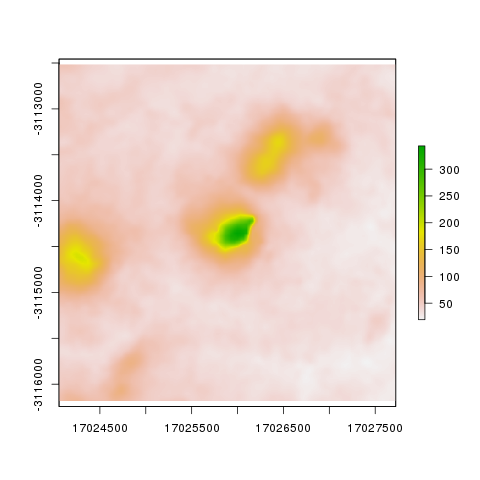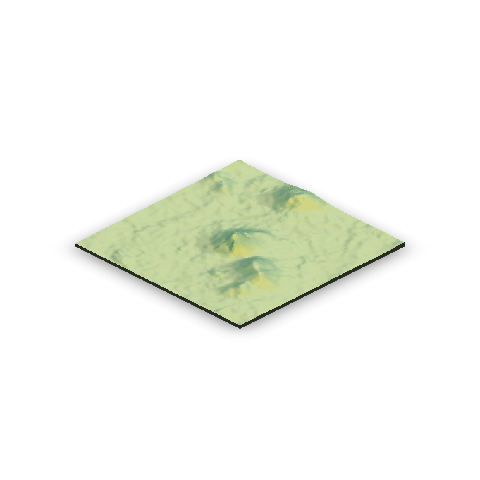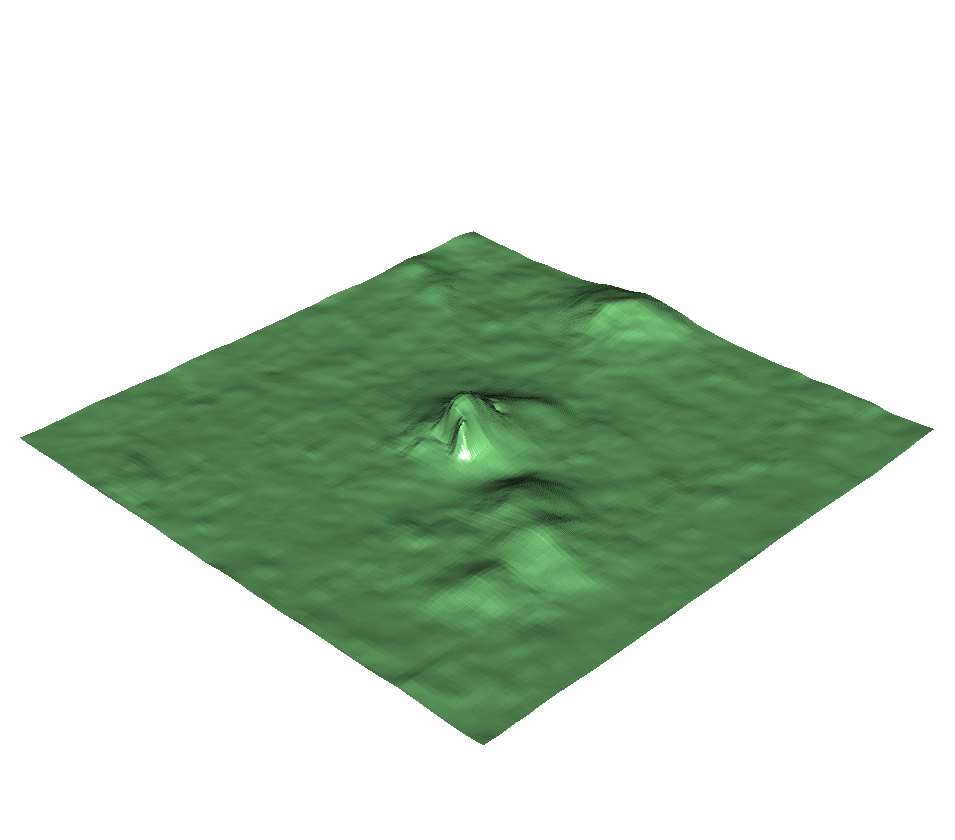This is based on a Miles McBain post published on 2019-06-29.
Slippy map tile providers (like Mapbox) can serve tiles that represent Digital Elevation Model (DEM) data, rather than map imagery. This data can be used to make 3D maps with rayshader or quadmesh.
Mapbox API
First, create a Mapbox account and generate an API access token (a ‘public’ token is also provided but not recommended for real-world applications). Add the API token to your .Renviron file (in your root directory) as:
MAPBOX_API_KEY=<YOUR_API_TOKEN>
Fetching Elevation Data
Mapbox has an API for DEM tiles called Mapbox Terrain-RGB that we will use in this example.
Fetch the RGB tiles for your bounding box
Let's figure out how many tiles we need.
library(slippymath)
tibrogargan<- c(xmin = 152.938485, ymin = -26.93345, xmax = 152.956467, ymax = -26.921463)
slippymath::bbox_tile_query(tibrogargan)
#> x_min y_min x_max y_max y_dim x_dim total_tiles zoom
#> 1 3 2 3 2 1 1 1 2
#> 2 7 4 7 4 1 1 1 3
#> 3 14 9 14 9 1 1 1 4
#> 4 29 18 29 18 1 1 1 5
#> 5 59 36 59 36 1 1 1 6
#> 6 118 73 118 73 1 1 1 7
#> 7 236 147 236 147 1 1 1 8
#> 8 473 295 473 295 1 1 1 9
#> 9 947 591 947 591 1 1 1 10
#> 10 1894 1183 1894 1183 1 1 1 11
#> 11 3788 2366 3788 2366 1 1 1 12
#> 12 7576 4732 7576 4732 1 1 1 13
#> 13 15152 9464 15153 9465 2 2 4 14
#> 14 30304 18929 30306 18931 3 3 9 15
#> 15 60609 37859 60612 37862 4 4 16 16
#> 16 121219 75719 121225 75724 6 7 42 17
#> 17 242438 151439 242451 151449 11 14 154 18Since it’s a small area, 9 tiles at zoom 15 will do. Let’s get the tile grid.
tibrogargan_grid <- bbox_to_tile_grid(tibrogargan, zoom = 15)
Now we’ll fetch the tiles from Mapbox.
library(glue)
library(purrr)
library(curl)
mapbox_query_string <-
paste0("https://api.mapbox.com/v4/mapbox.terrain-rgb/{zoom}/{x}/{y}.jpg90",
"?access_token=",
Sys.getenv("MAPBOX_API_KEY"))
tibro_tiles <-
pmap(.l = tibrogargan_grid$tiles,
zoom = tibrogargan_grid$zoom,
.f = function(x, y, zoom){
outfile <- glue("{x}_{y}.jpg")
curl_download(url = glue(mapbox_query_string),
destfile = outfile)
outfile
}
)Stitch Tiles into a Raster
We composite the images to raster with compose_tile_grid and view the raster:
tibrogargan_raster <- slippymath::compose_tile_grid(tibrogargan_grid, tibro_tiles)
raster::plot(tibrogargan_raster)
We see this mix of layers including a psychedelic blue-green RGB landscape because in terrain-rgb tiles, the RGB values provide additional precision to the elevation information. We’ll decode this in the next section.
Converting RGB tiles to DEM tiles
Mapbox provides a formula to decode the RGB values to elevation. This is implemented in the function below:
decode_elevation <- function(dat) {
height <- -10000 + ((dat[[1]] * 256 * 256 + dat[[2]] * 256 + dat[[3]]) * 0.1)
raster::projection(height) <- "+proj=merc +a=6378137 +b=6378137"
height
}When we apply it to tibrogargan_raster we get:
tibrogargan_elevation <- decode_elevation(tibrogargan_raster)
raster::plot(tibrogargan_elevation)
Rendering DEM Image
Rayshader
library(magrittr)
library(rayshader)
elevation_mat <- t(raster::as.matrix(tibrogargan_elevation))
shadow_mat <- ray_shade(elevation_mat)
elevation_mat %>%
sphere_shade(progbar = FALSE, sunangle = 45) %>%
add_shadow(shadow_mat) %>%
plot_3d(elevation_mat,
zscale = 7,
phi = 30,
theta = 135)
Quadmesh
library(quadmesh)
elevation_mesh <- quadmesh(tibrogargan_elevation)
rgl::shade3d(elevation_mesh, col = "light green")